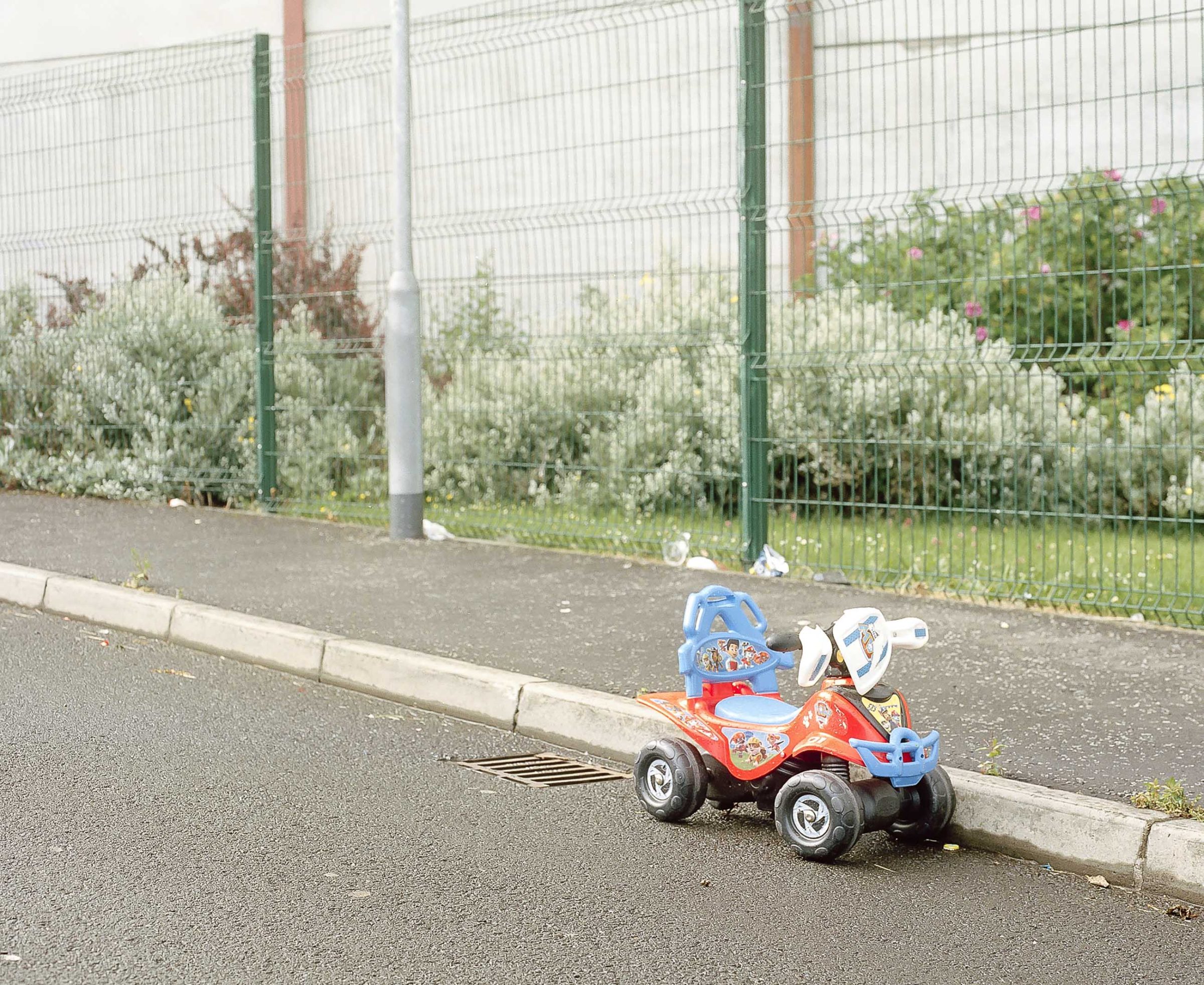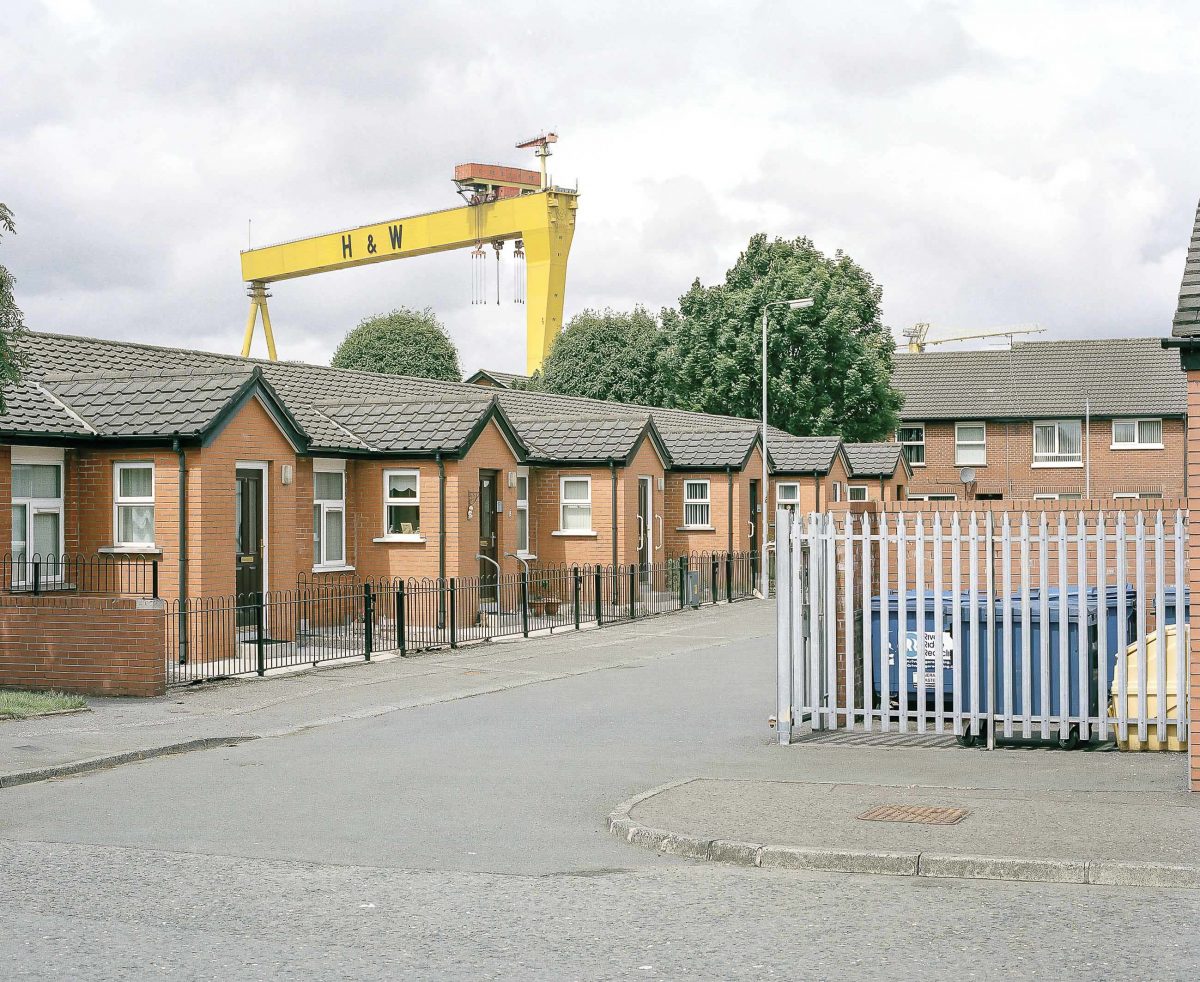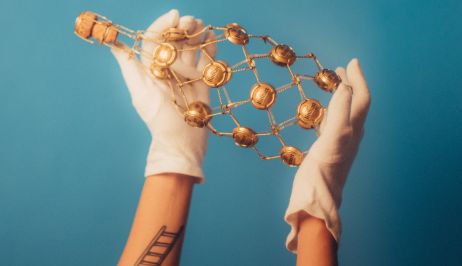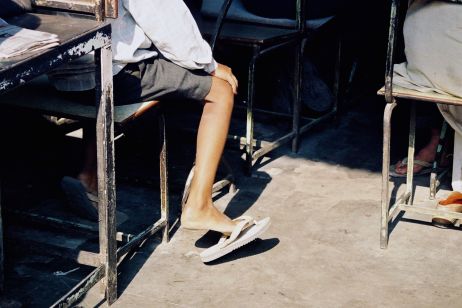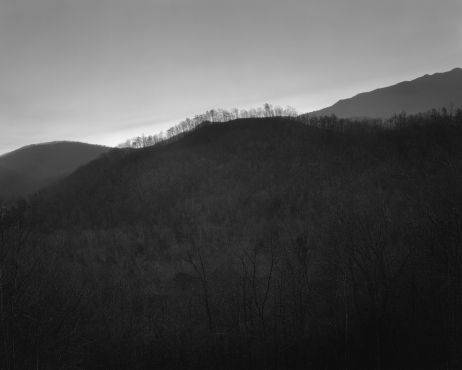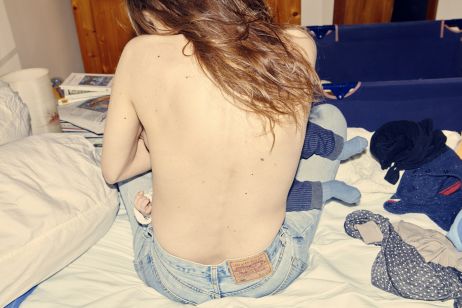Josh Adam Jones, a young photographer carries out a study of society of an Irish estate in Belfast with his camera. In the series 99 Peace Walls, Josh gives a soothing vision of the community‘s everyday lives and their surrounding environment. He gains a penetrating insight into their lives through the lense, adding political and cultural perspective. Josh develop’s into how these encounters came to life, stemming from a trivial chit-chat and turning it into a portrait that speaks without words.
Fisheye Magazine : First of all would you be able to tell me a little bit about yourself ?
Josh Adam Jones
: I am a freelance photographer based in Bristol, England. I am in my third and final year of my undergraduate degree in Photography at University. I would define myself as a ‘people person’, but then equally, in the same breath, sometimes I really do not like people much at all. This is probably because of the nature of what I do, not just photographically but in other part time work that involves working with customers for example. Being in the presence of ones own company can, at first be daunting and unhealthy, but it is something that I have grown to be quite fond of. Working as a social and environmental portrait photographer lends itself well to this attribute, as I often spend extended periods of time on my own; it allows me to then document the chance encounters that always seem to appear.

What got you into photography and how long have you been doing it for ?
I first became aware of the rewards of photography during my studies at the age of age 14/15, where I began combining more traditional processes of art & design with digital photography. Consequently, I followed the route of studying Photography at A-Level, and haven’t looked back since. Actually, that is a lie because when deciding what I wanted to pursue further in my education and career, I was going to, and had a place to study Biology at the University of Bristol. My life would have been infinitely different thus far if I had followed that original course!
Is this a personal, sociological or a political project ?
99 Peace Walls
is all three of those things actually, and only one of them was intentional. Whilst working at the most recent Belfast Photo Festival 2017, I wanted to undertake a personal project documenting the area I was staying in at the time. I also wanted to follow on from an earlier project called Céad Míle Fáilte, which translates to A Hundred Thousand Welcomes in Gaelic. The other two factors seemed to just happen because of the subject matter, and this is something that is hugely important to me; I like projects that germinate from small happenings and interests, and literally take a course of their own. Equally, I spend a lot of time reading and researching projects before undertaking them, and also learn a lot from the people I am speaking with. So yes, this project is all three things, but the sociological and political aspects came naturally from the subject matter as Northern Ireland still retains a sense of conflict, contrast and slight tension and unrest.
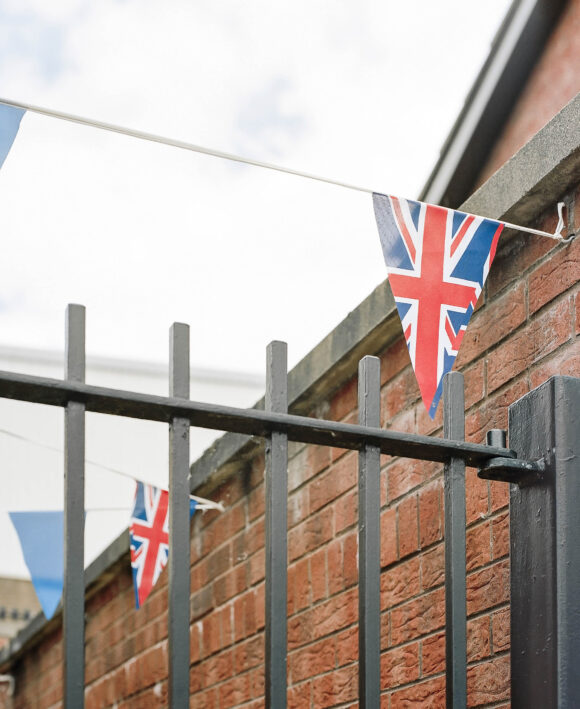
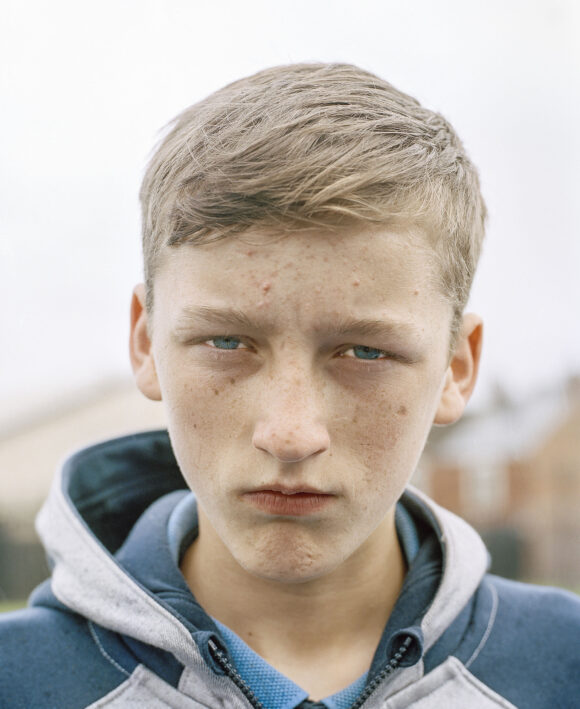
How do you prepare for these encounters and obtaining a portrait ?
It is only in recent times, in the last two years or so that I have fully understood what it is to make a portrait of someone. I always like to acknowledge Alec Soth here, as the exhibition I experienced in London, Gathered Leaves had a profound effect on me. From then on, environmental portraiture made more sense and I noticed a severe shift in my own photographic practice. So then, my process which is always being moulded and ‘perfected’ is quite simple; I wander about a place aiming to get lost, equipped with a Mamiya RZ-67 medium format camera and I let these encounters happen.
It seems as if a lot of your photos are socially aware, what is your opinion on that ?
In terms of being socially aware, I would say that I have a pretty good level of understanding and education when it comes to these types of ‘issues’. I owe a lot to how I was raised, and also the places I have been lucky enough to study in, so I guess some of this trickles into my photographic practice. However, when I am making a portrait of someone, I don’t let any preconceptions or aspects of their socioeconomic, political or religious interests influence the way I take the picture. I aim to make portraits in the same way, meaning the viewer is given a subjective (as subjective as possible) view of that person.
How did your subjects react to you taking photos ?
So far, I have only come across a handful of people who do not wish to be photographed or who have had adverse reaction to me and/or the camera. Therefore the process which I usually undertake is one that makes people feel at ease, as I generally like to start a conversation (no matter how trivial) before asking to make a portrait of someone. The people you see in 99 Peace Walls were all genuinely interested in me, my camera and why I wanted to take a picture of them. Most of them were drawn to the fact that, in their words not mine, they “might be famous one day”.
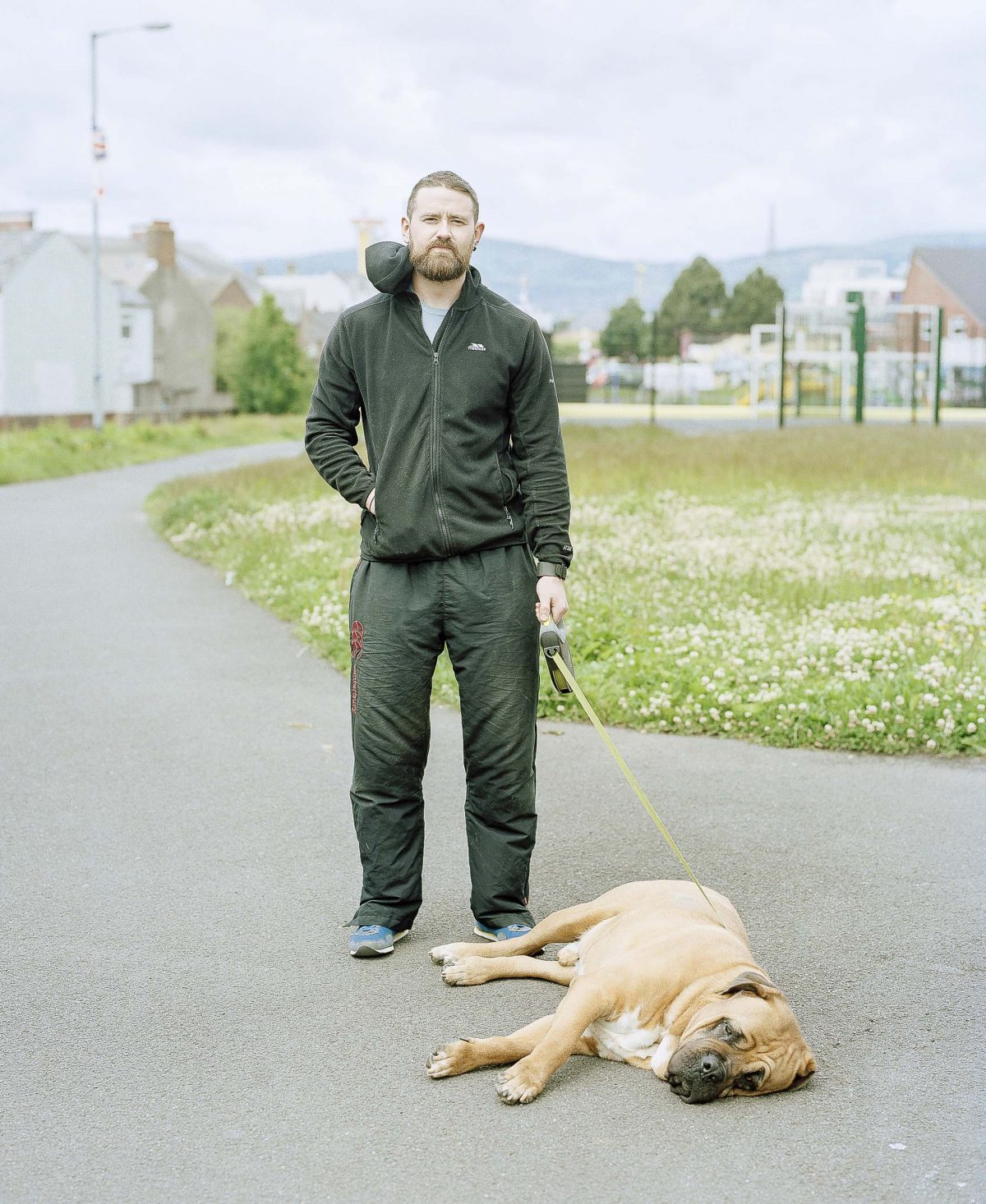
How would you describe this project ?
In short, I would describe 99 Peace Walls as a continuation of an earlier interest and project, but also as a small social commentary of the city of Belfast. It is a project that has only just ‘grown roots’, and will be continued in the near future.
What would be your favourite photo and why ?
From this series, my favourite image (although there are a few clear winners) is probably the portrait of Beth, Near McDonalds, East Belfast. I was finishing up for the day and heading home when I noticed the group of teenagers on the other side of the road. I purposely crossed over and approached them, and shortly made the group photograph after this. Beth, for one reason or another, whether it was the way she was dressed or the fact she was clutching a bottle of Vodka and smoking a cigarette, grabbed my attention more so than the rest. I took her aside, and I think I only made that one portrait of her. It was risky, but it felt right and I had a feeling it was going to be a belter. I was not disappointed when I came to process the film.
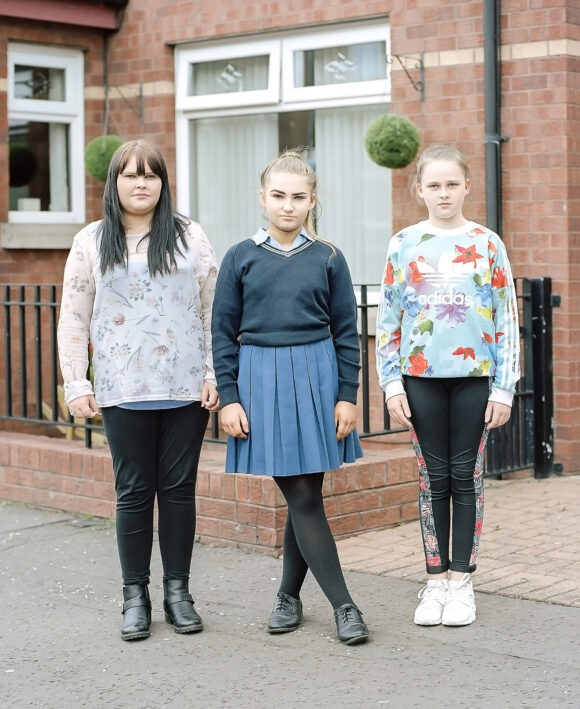
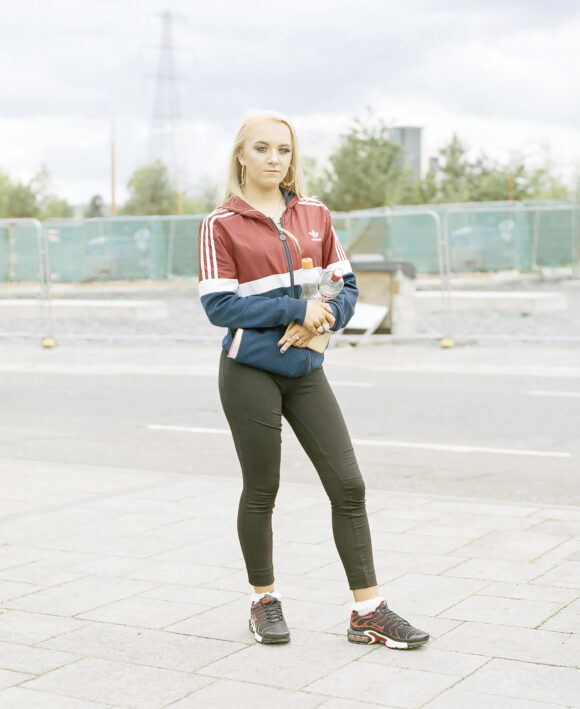
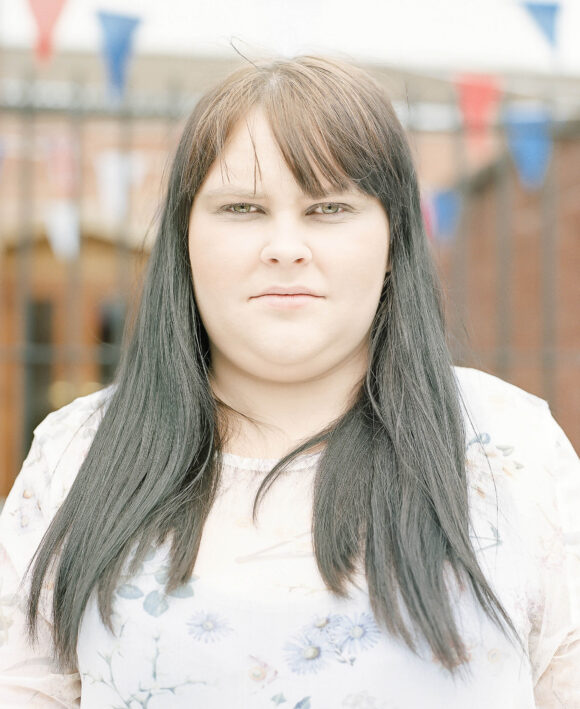
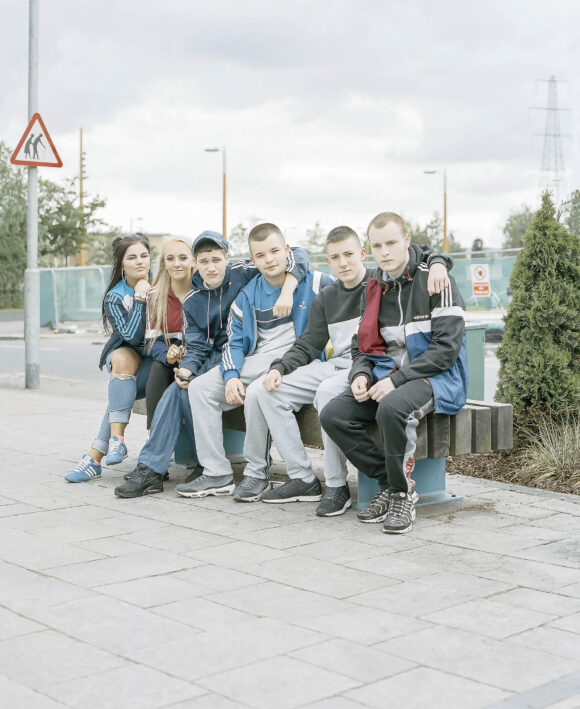
Photos by © Josh Adam Jones
